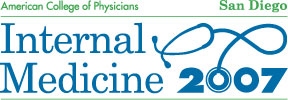
I now return (See previous post) to my discussion of the STAR *D report (Am J Psychiatry. 2006;106) which is a very important study of antidepressant therapy conducted by NIMH. 4000 patients at 41 sites (18 general medical settings). There was no placebo control. Those patients who failed monotherapy with citalopram (up to 60 mg) were offered two options: switching to another therapy or augmenting the initial therapy. They were not randomized here, but literally chose treatment alternatives (monotherapy vs. augmentation). They were randomized to the specific drug in each treatment arm.The monotherapy alternatives were: Sertraline, Buproprion SR, Venalfaxine XR
Augmentation alternatives were: Cit +Buproprion SR, Cit +Buspirone
There were no significant differences in these approaches with 25-30% in remission. The study showed that the mechanism of action, the effect on neurotransmitters, was less important than optimizing dosage for a prolonged period.
Why is this study important?
1. SSRIs need to time to work (six weeks)
2. They need to be titrated up to higher doses if response is limited.
3. Only 1/3 remit and ½ respond to initial treatment
4. There is no difference in efficacy between switching monotherapy and augmentation of initial therapy
Our next study:
EXCITE Trial: restraint- induced movement therapy: JAMA. 2006; 296: 2095-2104.
Stroke patients randomized to CIMT for 2 weeks vs. usual care (222 total patients)
CIMT: constraint-induced movement therapy: patient wears a restraining mitt on non-affected hand while engaging repetitive task practice and behavioral shaping with the hemiplegic hand
At 12 months the motor function in the treatment arm was significantly improved over the control using several validated tests of motor function.
Problem: Only 49% of the control group got any therapy after discharge whereas the CIMT were encouraged (and monitored) to use the mitt at home. Therefore it is not clear whether intensive conventional therapy could achieve the same results as CIMT.
Why is this study important? If validated in a larger trial, CIMT represents a major advance in the treatment of stroke patients
And, finally, a look at perioperative statin use:
Strength of evidence for perioperative use of statins to reduce cardiovascular risk: systematic review of controlled studies. BMJ, 2006;333:1149-52.
18 studies included: 2 RCT, 1 Case control, 15 Cohort (11 retrospective)
Odds ratio for death or ACS in RCTs (177 patients): 0.26 (CI .07-0.99)
Odds ratio in cohort studies (18,463): 0.70 (CI 0.48-0.72)
Yes, I recognize that most of the data is from retrospective analyses and subject to biases, but the drug is relatively safe and its beneficial effect makes good physiologic sense (in terms of inflammation). In a prospective trial they should include CRP at baseline and postop and see if its reduction correlates with improved outcome.
For now, I suggest its use in patients with ischemic heart disease, a RCRI score of 1 or greater, and perhaps patients with a high LDL.
